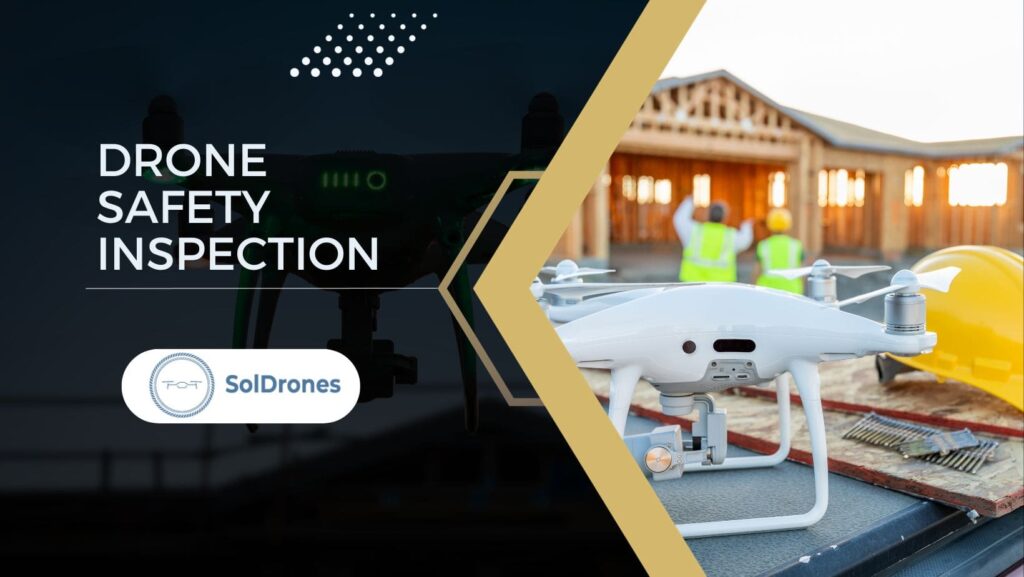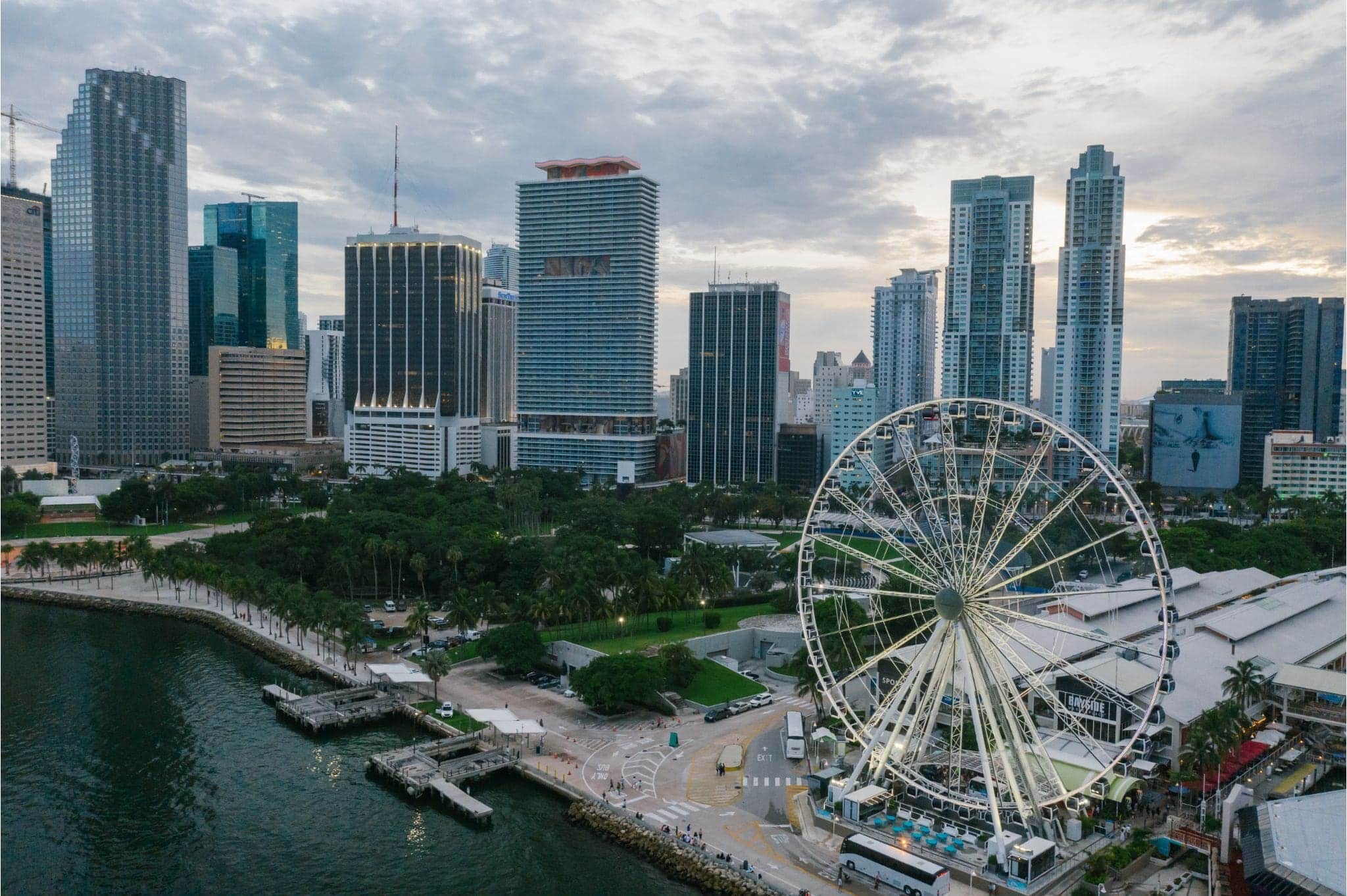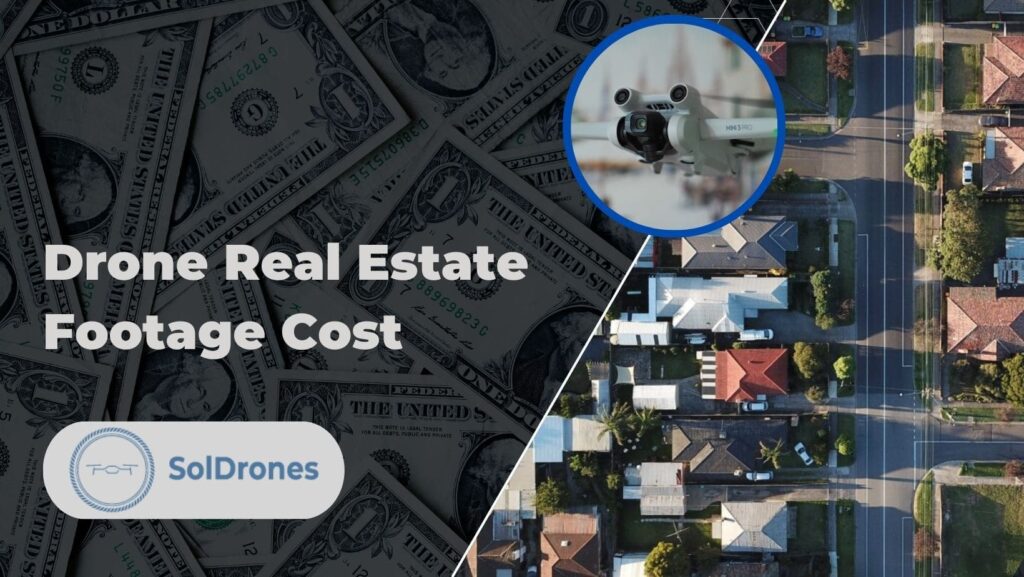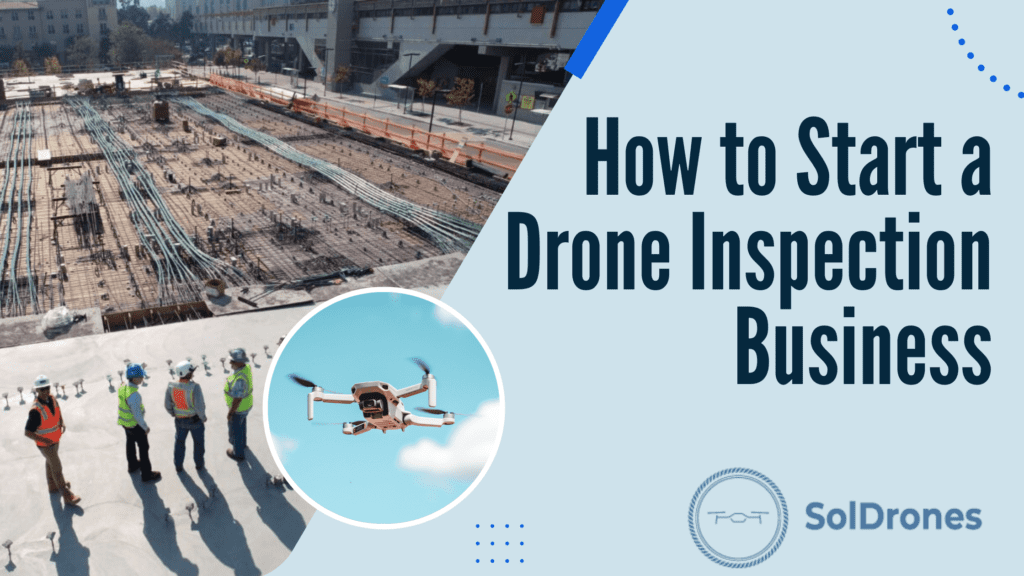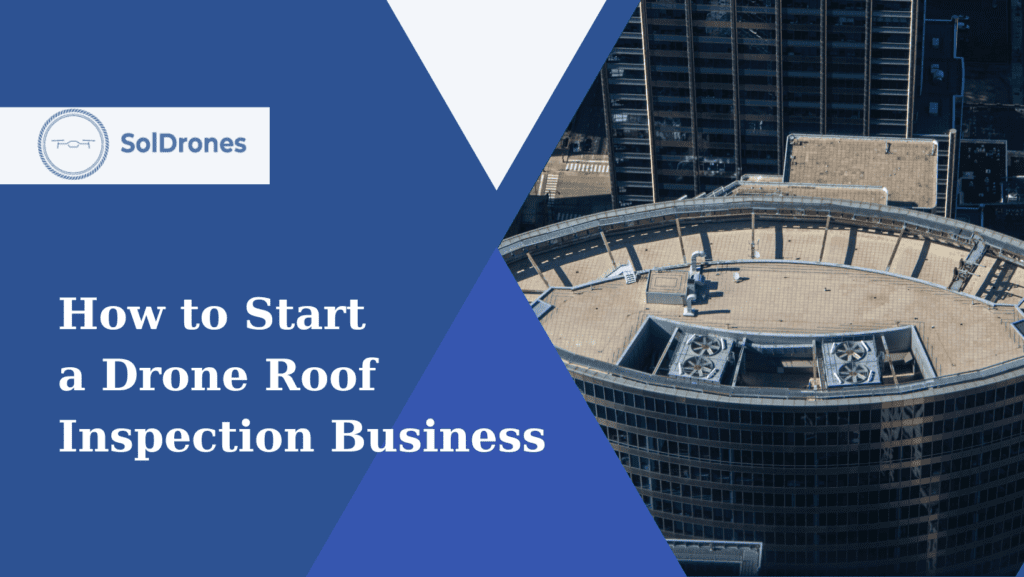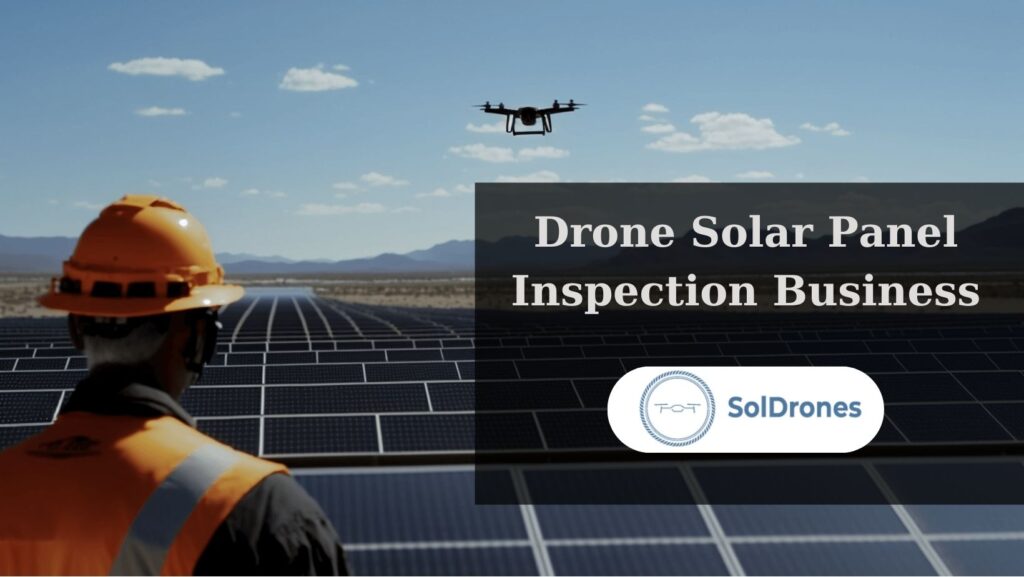Is your drone operation as safe as it could be?
Acknowledging the importance of drone safety in recreational and professional UAV operations is crucial.
This article serves as a manual to evoke interest and offer essential knowledge on secure UAV operations.
If you’re a first time pilot or experienced vet looking to step up your game, you will discover insights and best practices to harness drone technology safely and efficiently, urging action toward secure and optimized drone utilization.
Drone inspections are indispensable in ensuring the safety and integrity of various structures and areas
Article Highlights
- Comprehensive insight into best practices for drone safety inspection ensures secure UAV operations.
- Exploration of stringent regulations and advanced technologies aiding in precise and accurate inspections.
- Detailed overview of various inspection scenarios, enhancing understanding of UAV safety compliance.
How Does the Drone Inspection Process Work?
Navigating the intricate world of drone inspections requires a structured and systematic approach. From the initial stages of preparation to the final post-inspection review, every step is pivotal in ensuring the safety and accuracy of the inspection process. In this comprehensive guide, we’ll walk you through the meticulous steps involved in conducting a drone safety inspection, emphasizing the importance of each phase and the role of advanced drone technology in enhancing the quality of inspections.
Step 1: Preparation and Planning
Before commencing the drone inspection, thorough preparation and planning are essential. Review the scope and specific requirements of the drone safety inspections, understanding the role of unmanned aerial vehicles (UAV) in the inspection process.
Drone pilots should familiarize themselves with the inspected areas and clearly define the objectives. This video by ConEdisonNY overviews the process of inspecting a boiler:
Video Credit: ConEdison NY
Step 2: Pre-Inspection Checklist
Before deploying inspection drones, conduct a pre-inspection checklist to ensure all drone technology and equipment are in optimal condition.
This includes verifying the visual inspection tools and ensuring the safety of the drone pilots and the surroundings.
Step 3: Launching the Drone Safety Inspections
Once all preliminary checks are completed, proceed to launch the drone. Maintaining constant communication between drone pilots and ground control is crucial to monitoring and managing the drone’s flight path and collecting visual data effectively.
Step 4: Performing Inspection
Drone pilots should methodically maneuver the drone to perform inspections, focusing on each section designated in the planning phase. The inspection process should prioritize collecting precise visual data and documenting any abnormalities or discrepancies identified during the inspection.
Step 5: Data Analysis
After completing the drone safety inspections, analyze the collected visual data thoroughly. This includes reviewing the images and videos captured by the drone technology to identify any potential issues, damages, or areas requiring further investigation or immediate attention.
Step 6: Report Generation
Generate a comprehensive inspection report based on the visual inspection and data analysis findings. This report should include detailed observations, recommendations, and any necessary corrective actions.
Step 7: Post-Inspection Review
Conclude the drone inspection process by conducting a post-inspection review. Discuss the findings and any subsequent steps that need to be taken.
Ensure that all data is stored securely and any identified issues are addressed promptly to maintain the integrity and safety of the inspected structures or areas.
This step-by-step guide ensures that drone safety inspections are conducted meticulously, leveraging the full potential of advanced drone technology to maintain high safety and inspection standards.
Once all preliminary checks are completed, proceed to launch the drone. Maintaining constant communication between drone pilots and ground control is crucial to monitoring and managing the drone’s flight path and collecting visual data effectively.
What is the Importance of Conducting a Drone Safety Inspection?
Drone safety inspections are pivotal in modern infrastructure and industry practices. Let’s dive into 8 reasons why drone safety inspections are reshaping the way we assess and maintain structures and areas.
1) Drone Inspection Necessity
Drone inspections are indispensable in ensuring the safety and integrity of various structures and areas. Drones have revolutionized inspections by providing more accurate and detailed data and high-resolution visual inspections, allowing for unprecedented insight and analysis.
2) FAA Sanctioned
Conducting drone inspections requires adherence to the strict guidelines and regulations of the Federal Aviation Administration (FAA). These regulations are crucial as they ensure the legality and safety of using drones for inspections, mitigating the risks of accidents, and promoting responsible drone usage.
3) Efficiency & Safety
Drones offer a significantly safer and more efficient method of collecting aerial data on construction sites and during roof inspections. This innovation eliminates the need for manual, labor-intensive methods, reducing the risk of accidents and enabling quick and precise data collection, even in the most inaccessible areas.
4) Data Accuracy and Detail
The precision and detail achievable with drone technology far surpass traditional inspection methods. Data quality and accuracy advancement make drones a preferred choice across various industries, ensuring reliable and detailed insights are always available.
5) Cost-effective
Leveraging drones for safety inspections significantly reduces the overall drone inspection costs associated with the inspection process, providing a cost-effective solution for thorough inspections in hard-to-reach areas.
6) Application Across Industries
The multitude of benefits drones offer, and advancements in drone technology have made them an indispensable tool in several industries. Whether it’s meticulous visual inspections or other diverse applications, drones provide invaluable services across sectors, promoting safety and efficiency.
7) Real-time Inspection
Drones enable the collection of real-time, accurate data during inspections, facilitating immediate analysis and decision-making. This immediacy enhances the overall efficiency and efficacy of the inspection process, allowing for rapid responses to any issues uncovered during inspections.
8) Versatility
The versatile nature of drone inspections makes them suitable for various environments and requirements. Whether inspecting construction sites, conducting roof inspections, or any other scenarios necessitating detailed review, drones deliver comprehensive and adaptable solutions that traditional methods simply cannot match.
How Often Should Drone Inspections Be Performed?
The number of times a drone is used for an inspection depends on a number of things, such as the type of asset being checked, its health, the area where it is located, and the acceptable level of risk.
All depending on the property and structure type, drone inspections should be done at a regular cadence.
Structures in harsh environments or get a lot of wear and tear may need to be checked more often. For instance, a solar panel system in a dusty desert might need to be checked more often than one in a mild climate.
Here are some examples of how often checks by drones are usually done in different industries:
- Solar and Nuclear Power Plants: Once a year, twice a year, or four times a year.
- Roof Inspections: Once a year or twice a year.
- For bridges, commercial drones, and other infrastructure: Once a year or every six months.
- Power lines: Once a year or every six months.
- Cell towers: Once a year or twice a year.
- Wind turbines: Once a year or twice a year.
- Construction sites: once a month or once a week, depending on the construction project.
- Response to emergencies: As needed.
Damage from a natural disaster or other event can also be measured with the help of a drone. In these situations, the asset may be checked more often to keep track of its state and find any new damage.
In the end, the best way to figure out how often to do drone inspections is to talk to a trained professional who does drone inspections. They can help you make a plan of inspections that fits your needs and your budget.
Here are some more ideas for figuring out how often drone checks should be done:
- Think about how old and good the product is. Assets that are older or have been broken may need to be checked more often.
- Think about the area where the asset is. If an asset is in a harsh climate, it may need to be checked more often.
- Think about how much risk you are willing to take. Some groups might be more willing to take risks than others.
- Think about how much checks cost. Inspections that happen more often will cost more, but they may save money in the long run by avoiding expensive repairs and downtime.
Working with a qualified drone inspection professional, you can make a custom inspection plan that will help you keep your assets safe and in good shape.
Is Specialized Training Required to Perform Drone Safety Inspections?
Yes, specialized training is crucial for drone pilots intending to perform drone safety inspections.
This ensures they can conduct inspections safely and efficiently using advanced drones equipped with thermal sensors and imaging to gather accurate visual and thermal data.
Certified API inspectors, with expertise in manual and drone inspections, are well-versed in drone regulations and can adeptly navigate drones in varied environments, addressing safety concerns around power lines and potentially harmful materials and yielding more comprehensive and precise data than traditional inspections.
This rigorous training ensures public safety and optimal data collection during aerial inspections.
How Do Drone Technology and Safety Inspections Go Hand-in-Hand?
Drone technology and safety inspections are intertwined, serving as revolutionary tools in enhancing occupational safety and ensuring safety compliance across various sectors, including construction sites and mining operations.
When used safely, drones significantly mitigate health risks and technical difficulties associated with inspecting structures, especially in confined spaces, by providing a means to collect precise data and high-resolution images, surpassing the capabilities of conventional methods.
Integrating a drone’s camera allows for detailed aerial inspection, and the collected data aids emergency services and improves safety.
The best example is how drones were utilized to enhance ride inspections in amusement parks and theme rides.
Adherence to federal laws and government regulations is crucial when using drones for inspections to maintain the safety benefits and the integrity of the inspection scenarios.
How Does Regular Inspection Drones Enhance Overall Drone Performance?
Regular drone inspections are pivotal in optimizing inspection drones’ overall performance, especially in public safety, construction sites, and mining operations.
These thorough, visual drone inspections, executed by qualified drone pilots and remote pilots, enable the collection of crucial aerial data and visual data, leveraging thermal imaging and other advanced technologies to gather data that traditional inspections might miss.
The meticulous nature of drone inspection services ensures that drones can operate safely around power lines, in manual inspection scenarios, and other sensitive areas, significantly improving safety.
This process of using drones for inspections is instrumental in preventing unforeseen issues and enhancing the quality of data collection, providing a reliable alternative to conventional methods.
Are There Specific Federal Laws Governing Drone Safety Inspections?
Yes, there are rules at the federal level that say how drone safety inspections must be done. The Federal Aviation Administration (FAA) is in charge of following these rules.
The FAA has made complete rules about using drones safely, including checks. These rules are meant to protect people and property from the dangers of flying drones.
Some of the most important federal rules that govern drone safety checks are:
- Part 107: The main rules for flying drones in the United States are set out in Part 107 of the Federal Aviation Regulations (FARs). These rules apply to everyone who flies a drone, whether they are doing it for fun or money.
- Part 107.39: The FARs say that drones can be used for checks in Part 107.39. This rule says that the drone flying must always be able to see it (VLOS) during the check. It also says that drone pilots can’t fly over people who are not part of the check.
- Remote ID: According to the Remote ID rule, all drones that weigh more than 0.55 pounds must have a Remote ID device. Remote ID devices send out the drone’s identification number and location, which lets air traffic controllers and other law enforcement officials watch the drone and its pilot.
The FAA has rules about how drones can be used for checks, but there may also be state and local rules. It’s important for people who fly drones to check with their local officials to make sure they are following all laws and rules.
What are the Technical Requirements for Conducting Drone Inspections?
Drone inspections have different technical requirements based on the type of asset being inspected, the environment where the inspection occurs, and the amount of wanted detail. There are, however, some technical rules that all drone checks must follow.
1. Drone: The drone must be able to fly safely and dependably in the area where the check occurs. This means that the drone needs to be able to fly in wind, rain, and other weather. The drone must also have a good camera that can take clear, detailed pictures of the object being inspected.
2. Flight controller: The drone’s flight controller must be able to keep the drone’s location and direction under tight control. This is important to ensure the drone can move around objects safely and take good pictures.
3. Ground control station (GCS): The drone pilot uses the GCS to handle the drone and watch live video from the camera on the drone. The GCS must have a big screen to show the video feed and all of the flight controls easily.
4. Software: The program for the drone inspection must be able to:
- Change how the drone flies.
- Take pictures and videos and save them.
- Put pictures together to get a full picture of the object being inspected.
- Make reports that can be used to figure out how the asset is doing.
5. Features for safety: The drone should have safety features like geofencing, automatic homecoming, and avoiding obstacles. These features can help prevent accidents and keep the drone, its driver, and the people and property in the area safe.
In addition to the above general technical requirements, there may be unique technical requirements for drone inspections in certain industries or applications. For example, inspecting nuclear power plants with drones might need special training and tools.
Talking to a trained drone inspection professional is important to ensure you have the right tools and knowledge to do safe and effective drone inspections.
What Types of Data Can Be Collected During Drone Inspections?
Drone inspections enable the collection of many data types, offering extensive insights and high-level details crucial for various applications across different industries. Below are the types of data that can be collected during drone inspections:
1) Visual Imagery
High-resolution drone cameras capture detailed visual imagery, allowing for a thorough inspection of structures, landscapes, and objects from unique perspectives and angles.
2) Thermal Imagery
Drones equipped with thermal sensors can detect temperature variations, identifying hotspots or anomalies crucial for applications like detecting energy losses in buildings or identifying faulty equipment.
3) LIDAR Visual Data Collection
Drones equipped with Light Detection and Ranging (LIDAR) sensors can map and measure distances with high precision, producing accurate 3D models and topographical maps.
4) Spectral Data
Multispectral and hyperspectral sensors on drones can capture data across various light spectra, aiding in agricultural health assessment, environmental monitoring, and geological exploration.
5) Infrared Data
Infrared drone sensors collect data beyond the visible light spectrum, identifying building issues, like moisture or insulation problems, and assessing vegetation health.
6) Ultrasonic Data Collected
Ultrasonic sensors help measure the thickness and detect flaws or corrosion in materials, which is essential for inspecting pipelines, tanks, and other industrial structures.
7) Aerial Survey Data
Drones provide a bird’s-eye view, collecting data for aerial surveys that aid in creating detailed maps, conducting land assessments, and gathering geographical information.
8) Vibration Data
Vibration sensors on drones can detect irregularities in machinery and structures, aiding in predictive maintenance and structural health monitoring.
9) Acoustic Data
Drones can capture sound data to detect leaks in industrial settings or monitor noise pollution in environmental studies.
10) Gas & Chemical Sensing
Specialized sensors can detect the presence of specific gases or chemicals, crucial for monitoring air quality, detecting leaks, and ensuring safety in industrial environments.
11) Weather & Atmospheric Data
Drones can gather real-time atmospheric data, including temperature, humidity, wind speed, and atmospheric pressure, aiding meteorological studies and weather forecasting.
12) Electromagnetic Data
Drones with electromagnetic sensors are useful for subsurface geological exploration and utility detection applications.
The versatility of the types of data drones can collect makes them invaluable across varied industries, allowing for more informed decision-making, enhanced operational efficiency, and improved safety and compliance.
When analyzed correctly, the collected data provides profound insights, significantly surpassing the capabilities of traditional inspection methods.
Final Thoughts
In wrapping up this comprehensive guide on drone safety inspection, it’s crucial to acknowledge the transformative role of drones in enhancing inspection processes across diverse industries.
Drones have heralded a new era of operational safety and data accuracy through meticulous and advanced visual and thermal inspections, enabling more precise and insightful evaluations of structures and terrains.
Their adaptability, efficiency, and ability to collect high-quality data in real time make them indispensable tools in modern inspection scenarios.
As we progress, the continual advancements in drone technology and inspection methodologies promise a future where secure and efficient UAV operations become a cornerstone of industry best practices.
FAQs
What is the primary purpose of conducting drone safety inspections?
Drone safety inspections aim to ensure the operational integrity and safety of structures, terrains, and equipment, providing real-time, precise, and high-resolution data, thereby enabling more detailed and accurate evaluations than traditional methods.
How do drone inspections enhance overall safety in industries?
Drone inspections mitigate health risks and enhance occupational safety by allowing remote assessments of potentially hazardous and hard-to-reach areas, reducing the need for manual inspections and ensuring comprehensive safety compliance.
Does any government body regulate drone safety inspections?
The Federal Aviation Administration (FAA) regulates drone safety inspections, establishing guidelines and requirements to ensure the legality and safety of using drones for inspection purposes.
What types of data can be collected during a drone inspection?
Drone inspections can collect various data, including high-resolution visual data, thermal imagery, and other sensor-based data, providing insights into structural integrity, potential defects, temperature anomalies, and more.
Is specialized training required to perform drone safety inspections?
Yes, drone safety inspections typically require specialized training and certification, ensuring drone pilots can conduct inspections safely and efficiently, and comply with all applicable regulations and standards.
How does regular drone inspection affect drone performance?
Regular drone inspections are crucial for maintaining optimal drone performance. They allow for the early detection of issues, ensuring that drones operate efficiently and safely and reducing the likelihood of technical difficulties during operations.
Can drone inspections be conducted in confined spaces or hard-to-reach areas?
One of the major advantages of using drones for inspections is their ability to access confined spaces and other challenging areas that are typically inaccessible or hazardous for manual inspection, enabling more comprehensive and safer assessments.
Are drone inspections cost-effective compared to traditional methods?
Absolutely. Drone inspections are generally more cost-effective than traditional methods, as they reduce the need for extensive manual labor, scaffolding, and other resources and allow for faster and more efficient data collection.
How often should drone inspections be performed?
The frequency of drone inspections depends on industry requirements, government regulations, and specific operational needs, but regular inspections are recommended to ensure ongoing operational safety and efficiency.
In which industries are drone safety inspections most commonly used?
Drone safety inspections are widely used across various industries such as construction, energy, agriculture, mining, and emergency services due to their versatility, efficiency, and ability to collect accurate and detailed data.

